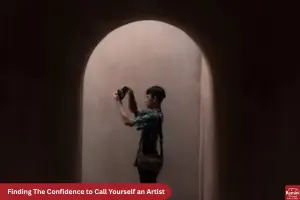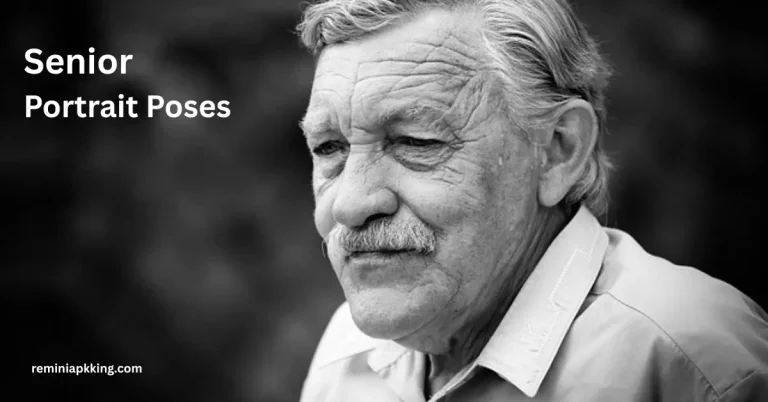Black & White Street Photography: Top Tips to Start
Black and white street photography captures the raw pulse of life in a way that’s timeless and bold. Stripping away color, it forces you to focus on light, shadow, and emotion, turning everyday moments into striking art. Whether it’s a fleeting glance between strangers or a quiet corner of a bustling city, this style of photography tells stories that stick with you. Let’s explore how to create images that grab attention and hold it, using simple techniques and a keen eye for the world around you.
This article dives into the heart of black & white street photography, offering practical tips and creative ideas to help you see the streets differently. From gear choices to editing tricks, we’ll cover what makes this genre so special. Ready to wander the urban jungle and capture its soul in monochrome? Let’s get started.
Why Black and White Street Photography Feels So Alive
Black and white street photography has a unique ability to make the ordinary feel extraordinary. Without color to distract, you notice the grit of a city sidewalk, the curve of a shadow, or the intensity in someone’s eyes. It’s like the world slows down, letting you see details you’d normally miss. This style thrives on contrast—light versus dark, motion versus stillness, creating images that feel alive and full of story.

The absence of color also adds a layer of timelessness. A photo of a busy street today could look like it was taken decades ago, connecting the present to the past. Black white street photography doesn’t just show what a scene looks like; it reveals what it feels like. Think of a rainy day with umbrellas bobbing through a crowd—color might distract, but monochrome pulls you into the mood, the rhythm, the raw emotion.
Gear That Works for Street Black and White Photography
You don’t need fancy equipment to create stunning black and white photography street shots. A simple camera with manual settings will do just fine. Compact mirrorless cameras or even a solid smartphone can work wonders if you know how to use them. The key is portability—street photography is about being quick and unobtrusive, so bulky gear can slow you down.
Lenses matter too. A 35mm or 50mm prime lens is a favorite for black & white street photography because it mimics how the human eye sees, keeping your shots natural. Fast lenses with wide apertures (like f/1.8 or f/2.8) are great for low-light scenes, letting you capture crisp details in shadowy alleys or dimly lit corners. Whatever gear you choose, keep it simple and focus on getting out there to shoot.
Finding the Perfect Moment on the Streets
Street black and white photography is all about timing. The best shots often come from waiting for that one fleeting moment—a person stepping into a pool of light, a dog darting across a street, or a couple sharing a quiet laugh. Patience is your friend here. Spend time observing your surroundings, watching how people move, how light shifts, and how shadows play across buildings.

Don’t just stand in one spot, though. Wander, explore, and let the city guide you. Sometimes, the best moments happen when you least expect them, like catching a street performer mid-spin or a kid chasing a pigeon. Keep your camera ready, and don’t be afraid to shoot from the hip for candid shots. The goal is to freeze a slice of life that feels real and unposed.
Mastering Light and Shadow in Monochrome
Light is everything in black and white street photography. Without color, you rely on light and shadow to create depth and drama. Look for high-contrast scenes, like a bright beam of sunlight cutting through a dark alley or a silhouette against a glowing storefront. These contrasts make your images pop, drawing the viewer’s eye to the interplay of shapes and textures.
Pay attention to the time of day, too. Early mornings and late afternoons, often called the golden hours, cast long, soft shadows that add mood to your shots. Harsh midday light can work too, creating stark contrasts that suit the gritty vibe of street black and white photography. Experiment with angles—shoot from low to the ground or high above to see how light changes the scene.
Composition Tricks to Make Your Photos Stand Out
Good composition can turn a simple street scene into a work of art. In black and white photography street style, you want to guide the viewer’s eye through the frame. Use leading lines, like a road or a fence, to pull attention toward your subject. Framing is another trick—shoot through a window or an archway to add depth and context to your image.
Don’t forget the rule of thirds, but don’t be afraid to break it either. Place your subject off-center for a dynamic feel, or go bold and center them for impact. Negative space, like an empty sidewalk or a plain wall, can make your subject stand out even more. Play with patterns too—think cobblestone streets or rows of windows—to add rhythm to your black white street photography.
Capturing Emotion in Black and White
The heart of street black and white photography lies in emotion. A great photo doesn’t just show a person; it shows what they’re feeling. Maybe it’s the joy of a street musician lost in their song or the quiet loneliness of someone staring out a café window. To capture this, get close (but respectfully) and focus on faces, hands, or body language that tells a story.

Candid shots often work best, but don’t shy away from asking for permission if you want a portrait. A quick chat can lead to a more relaxed, authentic expression. In monochrome, every wrinkle, glance, or gesture stands out, so keep your camera steady and your focus sharp. These emotional moments are what make black & white street photography unforgettable.
Editing Tips for Stunning Monochrome Images
Editing is where your black and white street photography comes to life. Start by shooting in RAW format if your camera allows—it gives you more control over contrast and exposure. In software like Lightroom or Photoshop, adjust the contrast to make your lights brighter and your shadows deeper. Don’t overdo it, though; too much contrast can make your photo look unnatural. Tools like enhance black and white photos with Remini Mod APK can also sharpen details and improve textures for a professional finish.
Play with the black and white sliders to fine-tune how colors translate to grayscale. For example, boosting reds can make skin tones pop, while tweaking blues can darken skies for a dramatic effect. Dodge and burn to highlight specific areas, like a subject’s face or a textured wall. The goal is to enhance the mood of your street black and white photography without losing its raw, authentic feel.
Avoiding Common Mistakes in Street Photography
It’s easy to slip up when you’re starting with black & white street photography. One big mistake is over-editing—cranking up the contrast until your photo looks like a comic book. Keep it natural; let the scene speak for itself. Another pitfall is shooting without purpose. Wandering aimlessly is fine, but having an idea of what you’re looking for—like interesting shadows or human interactions—helps you stay focused.
Respect is key too. Not everyone wants their photo taken, so be mindful of people’s privacy. If someone looks uncomfortable, move on. Also, avoid getting stuck in one style. Experiment with different angles, subjects, and lighting to keep your black and white photography street portfolio fresh and diverse.
Building Confidence to Shoot on the Streets
Shooting street black and white photography can feel intimidating at first. You might worry about standing out or bothering people. The trick is to blend in—act like you belong, and most people won’t notice you. Start in busy areas where photographers are common, like markets or tourist spots. Over time, you’ll feel more at ease snapping candid shots.
Practice makes confidence. Begin with small steps, like photographing objects or scenes without people. As you get comfortable, include more human elements. If you’re nervous about confrontation, use a small camera or your phone to stay discreet. The more you shoot, the more natural it feels, and soon you’ll be chasing moments like a pro in black white street photography.
Inspiration from the Masters of Monochrome
Looking at the work of legendary photographers can spark new ideas for your black & white street photography. Icons like Henri Cartier-Bresson and Vivian Maier captured the human condition with unmatched skill. Cartier-Bresson’s “decisive moment” philosophy—catching a scene at its peak—can push you to be patient and alert. Maier’s ability to find beauty in everyday life reminds you to stay curious.
Study their work, but don’t copy it. Notice how they use light, frame their shots, or capture emotion, then apply those ideas in your own way. Check out modern photographers too, like those sharing on platforms like Instagram or Flickr. Their fresh takes on street black and white photography can inspire you to try new techniques or explore new places.
Experimenting with Styles in Black and White
Black and white street photography isn’t one-size-fits-all. You can go for a high-contrast, gritty look that screams urban chaos, or a softer, low-contrast style that feels dreamy and nostalgic. Try shooting in fog or rain for a moody vibe, or focus on geometric shapes for a more abstract take. Each style changes how your viewer feels about the scene.
Don’t be afraid to mix things up. One day, shoot close-up portraits; another, capture wide shots of bustling crowds. Play with grain for a vintage feel or keep it clean for a modern look. The beauty of black white street photography is its flexibility—there’s no right or wrong way to do it, just your way.
Telling Stories Through Your Photos
Every great black & white street photography shot tells a story. A single image can hint at a bigger narrative—a lonely figure in a crowd, a joyful moment between friends, or a quiet street at dawn. To do this, think about what’s happening beyond the frame. What led to this moment? What might happen next? These questions help you capture images with depth.
Context matters too. Include elements like signs, buildings, or weather to give your photo a sense of place. A man smoking under a neon sign tells a different story than the same man in a park. Keep your viewer guessing, wondering about the lives behind your street black and white photography. That mystery is what keeps them looking.
Overcoming Challenges in Urban Environments
Shooting black and white photography street scenes comes with challenges. Crowded streets can make it hard to isolate your subject, so use a wide aperture to blur the background. Bad weather might tempt you to stay home, but rain or fog can add incredible texture to your shots. Low light is another hurdle—bump up your ISO, but watch for noise that can ruin the mood.
People can be unpredictable too. Some might pose, others might glare. Stay calm, smile, and move on if needed. Technical issues, like a dead battery or full memory card, can derail a shoot, so always carry spares. With practice, these challenges become part of the fun, pushing you to adapt and grow in black & white street photography.
Sharing Your Work and Building a Community
Once you’ve got some killer shots, share them! Platforms like Instagram, Flickr, or even a personal blog are great for showing off your black white street photography. Post consistently, but don’t flood your feed—quality beats quantity. Use hashtags like #blackandwhitestreetphotography or #streetblackandwhitephotography to reach people who love the genre.
Engage with other photographers too. Comment on their work, join online groups, or attend local photo walks. Feedback can help you improve, and connecting with others keeps you motivated. Your unique take on street black and white photography deserves to be seen, so put it out there and watch your skills grow.
Conclusion
Black and white street photography is more than just a style—it’s a way to see the world with fresh eyes. By focusing on light, shadow, and emotion, you can turn fleeting moments into timeless stories. With the right gear, a keen sense of timing, and a willingness to experiment, you’ll capture the soul of the streets in monochrome. Start small, stay curious, and keep shooting. The urban world is full of stories waiting for you to tell them through your lens. Get out there, embrace the challenges, and let your unique vision shine in every black and white frame.






